Ambassador Vineyard
Viña San Esteban
In Situ Gran Reserva Aconcagua Valley Cabernet Sauvignon 2017
Good for cooking. Got it at Ambassador across the street for 13.99 — 6 years ago
Boekenhoutskloof
The Chocolate Block Cinsault Blend 2016
Lovely bouquet of scents, very soft tannins, needs a bit of time to open up, a great ambassador of South African wines — 7 years ago
Corsair
Triple Smoke Small Batch American Malt Whiskey
Corsair’s Triple Smoke Whiskey is their best selling product and is crafted with malted barley smoked by three different fuel sources. The cherry wood from Wisconsin offers a sweet, floral aroma; the peat from Scotland brings with it a smoky finish; and the beech wood from Germany purportedly unites everything together. Brand ambassador Will Atkinson describes it as a spirit “for somebody looking to get into Scotch Whisky, but isn’t quite there yet.” While the peaty flavors certainly shine through, there’s a gratifying fullness to the whiskey, as well as a subtle bacony, charcuterie character. — 7 years ago
Corsair
Gin-Head Style American Gin
Corsair’s gin is still made at their first facility in Bowling Green, Kentucky, and remains a personal favorite in their portfolio. There’s an appealing oiliness to the gin’s texture – tasting of lemon and orange extracts. Brand ambassador Will Atkinson describes it as an Americanized Hendrick’s, namely for the inclusion of cucumber along with the botanicals. The cucumber’s freshness helps soften the spirit’s finish, which otherwise offers a sumptuously juicy expression of gin. — 7 years ago
Lucia Vineyards (Pisoni)
Garys' Vineyard Pinot Noir 2012
A wine I’ve enjoyed mostly upon release or near it. I vowed to wait six years and nearly made it. At least it is 2018...just! It’s worth waiting this/that long for it to develop. On the nose; sweetly, baked fruits of; dark cherries, strawberries, black plum, plums, blackberries, and notes of blue fruits. Cinnamon, vanilla, very light clove & nutmeg, caramel, soft, medium, beautiful spice, black fruit tea, limestone minerals, loamy, dry, brown top soil, fresh dark florals and violets. The mouthfeel is full, rich & lush. The tannins are round, still have some teeth and possess velvety round edges. It’s fruit driven but not a bomb and showing elegance & grace. Fruits are perfectly ripe; dark cherries, strawberries, black plum, plums, blackberries, notes of blue fruits and dry cranberries dip in and out. Cinnamon, vanilla, very light clove & nutmeg, caramel, soft, medium beautiful spice that is more pronounced on the palate, black fruit tea, touch of melted brown sugar/molasses, limestone minerals, touch of rich dark sweet turned soil, loamy dry brown top soil, soft understated eucalyptus/mint, dry fresh florals and violets. The round acidity is just right, just a slight very small alcohol burn, the length, structure, tension and beautifully balanced finish are in a very good place. Even better in 2-3 more years in bottle; which is when I’ll have my next one. Photos of; the winemaking duo of Gary Franscioni (left) and Gary Pisoni, Rosella’s Vineyard on the right. As well as, Garys’ Vineyard at the bottom. Producer notes and history...The Santa Lucia Highlands appellation is known for its rich, vibrant Pinot Noirs. However, that wasn’t always the case. The first Pinot was planted in 1973, but results weren’t all that great. Chardonnay was the appellation’s early star. Much of the area’s current fame for Pinot Noir arguably can be traced to Gary Pisoni, a free-spirited wine enthusiast who grew up in a Salinas Valley vegetable farming family. Pisoni decided to plant a few acres of Pinot Noir in 1982 on his family’s horse ranch, at the southern end of what was to become the Santa Lucia Highlands appellation but his horses started eating the grapes. So, they had to go. His initial planting were limited by a lack of water until he dug a well on the property. Pisoni started planting even more Pinot Noir. The vineyard is now around 45 acres and nearly all of it Pinot. By the late 1990s, word had spread about the success of his vineyard, and a number of Pinot specialists from around California had started lining up to buy his grapes. He started producing his own wine in 1998. Pisoni isn’t the only Gary who has become a force in the Santa Lucia Highlands. Gary Franscioni, a childhood friend, followed Pisoni’s lead by planting grapes and started Roar Wines in 2001. The two of them now have five vineyards between them...all farmed meticulously with the same crew. They are best of friends...sort of a Mutt & Jeff. They have become a formidable presence in the Highlands, attracting interest from top winemakers and Pinot Noir lovers from all over. Franscioni is also from a vegetable farming family; Pisoni figures they’ve known each other since they were 3 or 4. Franscioni saw his friend’s success and once he got some money together, decided to plant grapes of his own. Franscioni’s property is farther north and cooler as it’s closer to the Monterey Bay. He was going to plant Chardonnay. He woke up and Franscioni recalls imitating Pisoni, and shouted, “plant Pinot!” Franscioni planted what became Rosella’s Vineyard, named for his wife, in 1996. He took Pisoni’s advice and planted four acres of Pinot Noir, although he still planted 12 acres of Chardonnay. It’s now a total of around 50 acres with three-quarters of it Pinot Noir. The next year, they decided to become partners and planted Garys’ Vineyard, a 50 acre parcel where they grow Pinot and a little Syrah. Since then, Franscioni has developed Sierra Mar, 38 acres of Pinot, Chardonnay, Syrah and a tiny amount of Viognier. The two teamed up again to establish Soberanes Vineyard, 35 acres of mostly Pinot Noir, with a little bit of Chardonnay and Syrah. That last vineyard was developed by Pisoni’s son Mark. The Garys might seem an unlikely pair. Pisoni is colorful character to say the least and has an outspoken manner. Franscioni comes across as more serious- minded. However, the collaboration between the two, who often address each other as “partner,” clearly works well. The two are good on their own, but better together. Pisoni being more gregarious acts as the frontman. He is the Ambassador. He’s a check on the rest to keep the quality high. Franscioni and Mark Pisoni run the farming on their own vineyards and work together on the joint ventures. The family involvement doesn’t stop there. Jeff Pisoni makes his family’s wines, which are under the Pisoni and Lucia brands. Franscioni’s son, Adam, joined the family business in time for the 2011 harvest. He handles sales for Roar and helps his father manage the vineyards. The grapes from all five vineyards are in huge demand, because the two families are such careful farmers, constantly tweaking and improving. Prominent customers include; Testarossa, Siduri, Kosta Browne, Copain and Bernardus. When a new vintner approaches them about buying grapes, the partners examine the winery’s track record and the Winemaker. If they like what they see, the winery is put on a waiting list. There’s not very much movement in their vineyards. When Franscioni planted Sierra Mar, he and Pisoni had 62 wineries waiting to buy fruit. Soberanes was developed with the idea of working with some new winemakers. There was some concern, even among the two families, that quality might suffer as the vineyard operations grew. However, there’s no indication that’s the case. In fact, with each new venture, they build on what they’ve learned in their older vineyards. Eventually, there will be even more vineyards. The Pisonis and Franscionis have purchased a 100 acre cactus farm in the Santa Lucia Highlands. There’s still a lease on the property. So, prickly pear cactus will continue to be grown for five more years. But at some point, the land will be planted with vines. Both families understand the importance of continuing to build for the future. The Garys looking back tell a story of being in the same spot some years ago and looking at a field of broccoli out back. He told Franscioni that the field would look a lot better with Pinot Noir vines. Now that parcel is part of Rosella’s Vineyard, and it’s planted with Pinot. Everybody thought he was crazy...most people usually think that when someone makes a bold decision. He’s a person who has always had vision and creativeness. He also has tremendous passion. Good things only happen when a person possesses all three of these qualities. Their wines are primarily available by mailing list. However, Nepenthe in Big Sur, CA acts as a quasi tasting room for some of their wines. — 8 years ago

Château Segur de Cabanac
St. Estèphe Red Bordeaux Blend 2011
What's not to like of this genuine left bank Bordeaux ambassador dark color, easy tannins, multiple earth and currant aromas opening a little light on the body felicitation nous amis Francais! — 8 years ago
Poggio al Casone
Castellani La Cattura Toscana Teroldego Syrah 2016
Did not improve my jumping ability. Once I got past the disappointment, what I was left with was a decent blend that was sort of mellow and understated with low acidity. It seemed as though it was trying not to provoke me but that, in itself, set me off a bit. It was a B-level ambassador of a wine. — 5 years ago
Bollinger
Special Cuvée Brut Champagne Blend
Traditional best! Citrus acidic flavor is a bit more. Good balance. This insists each point. But not too much, so elegant. @1950, wine plus - X Ambassador, 181204-181206 9.0
Rich! toasted and fruity. Acidity as well. Highly balanced. Elegancy. @2150, wine plus X ST Cafe, 240422 9.1 — 7 years ago
Yalumba
The Signature Barossa Cabernet Sauvignon Shiraz 2010
This is the 2010 Yalumba Signature Series Cabernet Shiraz named in honour of Yalumba Ambassador Jane Ferrari who is holding the bottle next to me. Jane travels the world spruiking the Gospel of Yalumba in the most entertaining and knowledgeable way. This was an outstanding Cabernet Shiraz Blend. Equal in quality and cellaring potential to Penfolds Bin 389. Blackberry and chocolatey tannins. Sweet berry fruit still with noticeable oak and a long cellaring potential. A classic wine for a classic lady who would get a job in Stand up Comedy if she wasn’t so good at her current job!!! @Delectable — 7 years ago
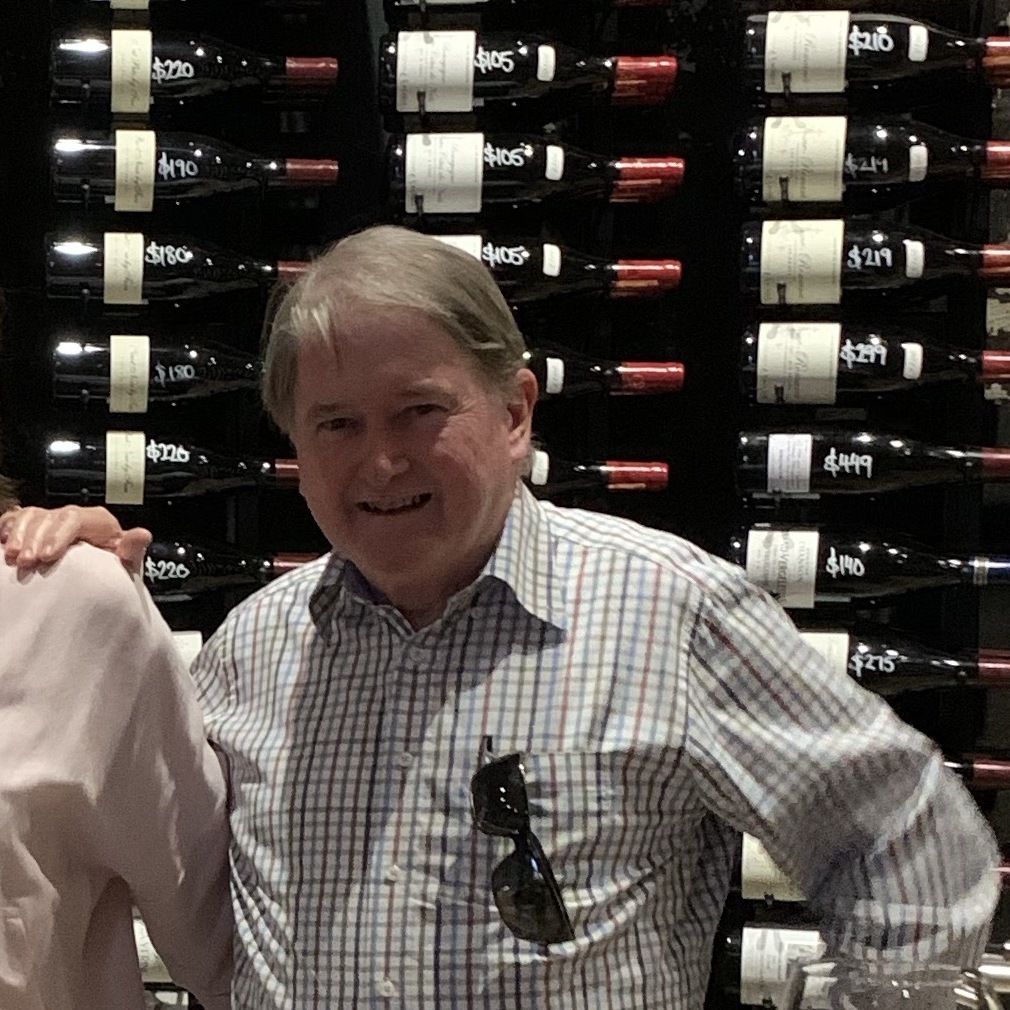
Montaudon
Classe M Brut Champagne Blend
Wine number 500! It is my Wife's birthday, so it calls for Champagne! Classe M is 7 year old NV champagne - elegant and a great ambassador of Reims. Bright baked apple core, lime zest, lemon sorbet, brioche, clover honey, honeysuckle, dried pineapple, tangelo, chalk mineral - golden color, medium bodied and medium plus fine bubbles, exhibiting both signs of maturity, yet the zing of youth that shows promise for further maturation. This is easily one of my favorite champagnes, and received a 92 point critique on Wine Spectator.
Michel, the winemaker was an incredibly nice man when I met him, in his 80's, still keeping tradition alive.
I like writing about the wines I experience because it helps me solidify the moment in my memory.. but I also like to write to learn better how to describe wine to others, as it is a passion of mine. Thanks to all who have shared their knowledge to me and opinions as I continue to explore the world of wine.
Cheers!
#montaudon — 8 years ago
Murrieta's Well
The Spur Livermore Valley Red Blend 2015
I’ve started seeing quite a bit of this winery on Delectable as of late, and @Jason Oliver does a great job of being an ambassador for them. He informed me of a killer deal they had going, so I snagged a 3-pack.
Robbie Meyer (of Del Dotto, Pierson Meyer) became the full time winemaker in 2015. The Spur is their red blend and really is an awesome value for Livermore Valley. Bordeaux varietals + petite sirah. Super dark in the glass. Nose is full of herbs, crushed blackberries, graphite. I thought it would be super heavy on the palate due to the color, but it was soft. Easy to pick up the petite sirah in this with the spice and pepper on the finish. Tart and spicy fruit too like rhubarb. Smokiness and cedar wood. Looking forward to the merlot and Malbec I have. — 8 years ago
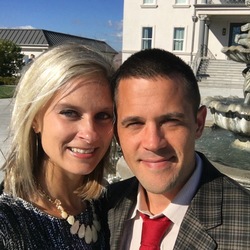
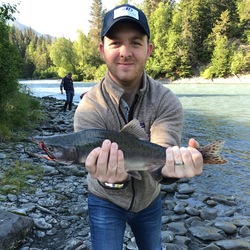

Erath
Oregon Pinot Noir 2015
A wonderful ambassador of Oregon pinot. Our first introduction years ago and a friend ever since. — 8 years ago
Jaffurs Wine Cellars
Verna's Vineyard Syrah 2008
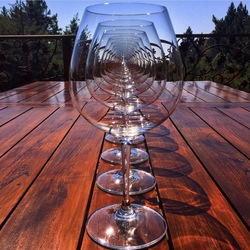
Torbreck Vintners
Descendant Barossa Valley Shiraz Viognier 2005
On the nose, boysenberries, olallieberries, blueberries, blackberries, baking spices, dry powdery soils, dry stems, bramble and bright, fresh, fragrant purple florals. The palate is warm, lush, round and elegant. Tannins 65% resolved. It's still fairly big and very fresh. Palate fruits are; boysenberries, olallieberries, blueberries, blackberries, black raspberries and raspberries haunting the background. Lifting warm spices, black pepper, black licorice, vanilla, clove, nutmeg, dry crushed rocks, volcanic minerals with liqueur notes settling in at the mid point to the long finish. Dry stones, dry straw, tarry notes, violets, purple florals and palate raining acidity. The finish is long with good balance of fruit & earth. There's still nice tension, length and structure. The 05 still has another 7-10 years of good drinking ahead. As great as it was to be at the property tasting their new releases, it's a pleasure to enjoy one of their well aged wines back in the states. Photos of; the view from the new estate (love that red Barossa soil), tasting bar, Andrew Tierney, Torbreck International Sales Ambassador who hosted our visit(left) and Owner, David Powell (right). Producer history and notes...Torbreck Vintners was founded by David Powell in 1994. Before founding Torbreck, he worked for Robert O'Callaghan at Rockford Wines in the Barossa Valley. Rockford is an historic old winery and they love old historic wine relics...all you have to do is walk the property. In trying to start his own label, David lacked the funds to buy grapes outright. So, David began to share-farm a vineyard, a practice which involves working without pay until the grapes are sold, at which time the owner is paid a percentage of the market rate for his grapes and the share-farmer keeps the grapes for their own use. The share-farming principle or as we call it, sweat equity. This enabled Torbreck to obtain fruit from the very best vineyards in the Barossa Valley, while giving David Powell experience working in the vineyard and winery. In 1995 Powell crushed and fermented his grapes in a shed on his 12-hectare Marananga property; which continues to be home to the winery. The winery was named "Torbreck" after the forest in Scotland where Powell worked as a lumberjack. The first wine made under the Torbreck label was the 1995 RunRig. When it was released in 1997, Parker gave it a score of 95; which went a long way in launching Torbreck Vintners. Lisa, now Managing Editor at Robertparker.com raised that score to 98 in 2010. In late 2002, Torbreck was placed into receivership due to financial pressures on Powell from a divorce settlement. Torbreck was purchased by Australian businessman Jack Cowin for 6.5 million Australian dollars with Powell retained as winemaker and managing director. In 2008 Powell reacquired the estate in partnership with Peter Kight, the owner of Quivira Winery in Sonoma County's Dry Creek Valley in California. Torbreck produces around 70,000 cases of wine per year, depending on vintage conditions. 6.5 million Australian dollars is not a lot of money in today's environment...actually quite a deal. They had just completed their new facilities as shown in the photos two weeks prior to our visit in April. If you haven't had their wines, their lower price wines are very good at great values. Torbreck makes everything up to their high end RunRig at $300 plus a bottle with lots of quality wines in between that are really quite good and value priced vs. the rest of international market. — 8 years ago
Château Lynch-Bages
Grand Cru Classé Pauillac Cabernet Sauvignon Blend 2000
The 2000 is delicious but, it is evolving at a glacial pace. Out of magnum.
On the nose, touch of barnyard, glycerin, ripe; blackberries, dark cherries, black raspberries, plum, strawberries & cherries. Vanilla, dry clay, limestone, river stones, just a touch of pyrazines & bandaid, dark,,turned, moist earth, dry grass and dry & fresh dark florals.
The body is full, round & sexy. Dry softened, sweet tannins. ripe; blackberries, dark cherries, black raspberries, plum, strawberries & cherries. Vanilla, dry clay, limestone, river stones, just a touch of pyrazines & bandaid, fresh tobacco leaf, saddle-wood, dry underbrush, dark, turned, moist earth, dry grass and dry & fresh dark florals. The acidity is magnificent. The structure, tension, length and balance are sensational. The finish is drop dead gorgeous. I’d still hold mine another 5 years as long as you have 3-4 bottles for more 5 year increments.
Photos of, their Estate vines, Clyde Beffa-Owner of K&L Wine Merchants, Owner of Chateau Lynch Bages - Jean-Michel Cazes, guests of the dinner and a sunset view from their Estate.
Producer notes and history...Lynch Bages takes its name from the local area where the Chateau is located in Bages. The vineyard of what was to become Lynch Bages was established and then expanded by the Dejean family who sold it in 1728 to Pierre Drouillard.
In 1749, Drouillard bequeathed the estate to his daughter Elizabeth, the wife of Thomas Lynch. This is how the estate came to belong to the Lynch family, where it remained for seventy-five years and received the name Lynch Bages. However, it was not always known under that name.
For a while the wines were sold under the name of Jurine Bages. In fact, when the estate was Classified in the 1855 Classification of the Medoc, the wines were selling under the name of Chateau Jurine Bages. That is because the property was owned at the time by a Swiss wine merchant, Sebastien Jurine.
In 1862, the property was sold to the Cayrou brothers who restored the estate’s name to Chateau Lynch family.
Around 1870, Lou Janou Cazes and his wife Angelique were living in Pauillac, close to Chateau Pichon Longueville Baron. It was here that Jean-Charles Cazes, the couple’s second son, was born in 1877.
In the 1930’s, Jean-Charles Cazes, who was already in charge of Les-Ormes-de-Pez in St. Estephe agreed to lease the vines of Lynch Bages. By that time, the Cazes family had history in Bordeaux dating back to the second half of the nineteenth century.
This agreement to take over Lynch Bages was good for both the owner and Jean Charles Cazes. Because, the vineyards had become dilapidated and were in need of expensive replanting, which was too expensive for the owner. However, for Cazes, this represented an opportunity, as he had the time, and the ability to manage Lynch Bages, but he lacked the funds to buy the vineyard.
Jean-Charles Cazes eventually purchased both properties on the eve of the Second World War. Lynch Bages and Les-Ormes-de-Pez have been run by the Cazes family ever since. In 1988, the Cazes family added to their holdings in Bordeaux when they purchased an estate in the Graves region, Chateau Villa Bel Air.
Around 1970, they increased their vineyards with the purchase of Haut-Bages Averous and Saussus. By the late 1990’s their holdings had expanded to nearly 100 hectares! Jean-Michel Cazes who had been employed as an engineer in Paris, joined the wine trade in 1973. In a short time, Jean Michel Cazes modernized everything at Lynch Bages.
He installed a new vat room, insulated the buildings, developing new technologies and equipment, built storage cellars, restored the loading areas and wine storehouses over the next fifteen years. During that time period, Jean Michel Cazes was the unofficial ambassador of not just the Left Bank, but all of Bordeaux. Jean Michel Cazes was one of the first Chateau owners to begin promoting their wine in China back in 1986.
Bages became the first wine sent into space, when a French astronaut carried a bottle of 1975 Lynch Bages with him on the joint American/French space flight!
Beginning in 1987, Jean-Michel Cazes joined the team at the insurance company AXA, who wanted to build an investment portfolio of quality vineyards in the Medoc, Pomerol, Sauternes, Portugal and Hungary.
Jean-Michel Cazes was named the director of the wine division and all the estates including of course, the neighboring, Second Growth, Chateau Pichon Baron.
June 1989 marked the inauguration of the new wine making facilities at Lynch Bages, which was on of their best vintages. 1989 also marked the debut of the Cordeillan- hotel and restaurant where Sofia and I had one of our best dinners ever. A few years after that, the Village de Bages with its shops was born.
The following year, in 1990, the estate began making white wine, Blanc de Lynch Bages. In 2001, the Cazes family company bought vineyards in the Rhone Valley in the Languedoc appellation, as well as in Australia and Portugal. They added to their holdings a few years later when they purchased a vineyard in Chateauneuf du Pape.
In 2006, Jean-Charles Cazes took over as the managing director of Chateau Lynch Bages. Jean-Michel Cazes continues to lead the wine and tourism division of the family’s activities. Due to their constant promotion in the Asian market, Chateau Lynch Bages remains one of the strongest brands in the Asian market, especially in China.
In 2017, Chateau Lynch Bages began a massive renovation and modernization, focusing on their wine making, and technical facilities. The project, headed by the noted architects Chien Chung Pei and Li Chung Pei, the sons of the famous architect that designed the glass pyramid for the Louvre in Paris as well as several other important buildings.
The project will be completed in 2019. This includes a new grape, reception center, gravity flow wine cellar and the vat rooms, which will house at least, 80 stainless steel vats in various sizes allowing for parcel by parcel vinification.
The new cellars will feature a glass roof, terraces with 360 degree views and completely modernized reception areas and offices. They are not seeing visitors until it’s completion.
In March, 2017, they purchased Chateau Haut Batailley from Françoise Des Brest Borie giving the Cazes family over 120 hectares of vines in Pauillac!
The 100 hectare vineyard of Lynch Bages is planted to 75% Cabernet Sauvignon, 17% Merlot, 6% Cabernet Franc and 2% Petit Verdot. The vineyard has a terroir of gravel, chalk and sand soils.
The vineyard can be divided into two main sections, with a large portion of the vines being planted close to the Chateau on the Bages plateau. At their peak, the vineyard reaches an elevation of 20 meters. The other section of the vineyard lies further north, with its key terroir placed on the Monferan plateau.
They also own vines in the far southwest of the appellation, next Chateau Pichon Lalande, on the St. Julien border, which can be used in the Grand Vin. The vineyard can be split into four main blocks, which can be further subdivided into 140 separate parcels.
The average age of the vines is about 30 years old. But they have old vines, some of which are close to 90 years old.
The vineyards are planted to a vine density of 9,000 vines per hectare. The average age of the vines is about 30 years old. But they have old vines, some of which are close to 90 years old.
Lynch Bages also six hectares of vine are reserved for the production of the white Bordeaux wine of Chateau Lynch Bages. Those vines are located to the west of the estate. They are planted to 53% Sauvignon Blanc, 32% Semillon and 15% Muscadelle. On average, those vines are about 20 years of age. Lynch Bages Blanc made its debut in 1990.
To produce the wine of Chateau Lynch Bages, vinification takes place 35 stainless steel vats that vary in size. Malolactic fermentation takes place in a combination of 30% French, oak barrels with the remainder taking place in tank.
The wine of Chateau Lynch Bages is aged in an average of 70% new, French oak barrels for between 12 and 15 months. Due to the appellation laws of Pauillac, the wine is sold as a generic AOC Bordeaux Blanc, because Pauillac does not allow for the plantings of white wine grapes.
For the vinification of their white, Bordeaux wine, Blanc de Lynch-Bages is vinified in a combination of 50% new, French oak barrels, 20% in one year old barrels and the remaining 30% is vinified in vats. The wine is aged on its lees for at least six months. The white wine is sold an AOC Bordeaux wine.
The annual production at Lynch Bages is close to 35,000 cases depending on the vintage.
The also make a 2nd wine, which was previously known as Chateau Chateau Haut Bages Averous. However, the estate changed its name to Echo de Lynch Bages beginning with the 2007 vintage. The estate recently added a third wine, Pauillac de Lynch-Bages.
— 7 years ago


Allegrini
Amarone della Valpolicella Classico Corvina Blend 1998
On the nose, liqueured dark cherries, cherries, poached strawberries, dark raisins, plums, dates, figs, baking spices, chocolate, dark rich soils, light spice and decayed dark florals. The mouthfeel is thick, rich and nicely resolved. Although it's nearly 20 years from inception, it's quite fresh and somewhere just the other side of it's peak. Dark cherries, plum, raisins, figs, dates, prunes, cherries, poached strawberries, somewhere between black raspberries & raspberries, dark & milk chocolate, light spice, rich, dark, moist soil, dry loamy top soil, violets, decayed, dark florals, light baking spices and caramel with nice round acidity. The finish is thick, rich 50-50 fruit and earth and lasts nearly a minute. This 98 is drinking nicely tonight with our Burrata, olive oil, Tondo balsamic, roasted garlic, garden cherries tomatoes and pesto sauce. Photos of; their beautiful villa estate, straw mats in warm rooms for drying the grapes to make this wine, Owner/Ambassador-Marilisa Allegrini, one of their vineyards and our charcuterie. Producer history & notes...Allegrini is one of the most acclaimed wineries in Veneto and a benchmark producer of Amarone. Their owner Marilisa Allegrini is a global ambassador for the region and internationally. Many in the industry considered her, "the voice of Amarone.” The Allegrini legacy spans six generations of wine growers. The Allegrinis have played a leading role in Valpolicella since the 16th century. Giovanni Allegrini is the patriarch of the modern estate. Today, his children, led by owner Marilisa, carry his legacy forward as one of the Veneto’s most acclaimed estates. Marilisa is the Ambassador for the estate while her brother, Franco, is internationally praised as one of Italy’s finest winemakers. They have 247 acres of vineyards in the Valpolicella Classico, the Allegrinis nurture a collection of remarkable sites. Each with its own personality, soils and focused microclimate. All seven vineyards range from the steep hillsides of La Grola to the plateau of La Poja and offer uniquely special expressions that make up their truly amazing wines. Allegrini has earned many accolades. In 2016, they were named Winery of the Year by Gambero Rosso, Italy’s definitive wine and food magazine. Parker called Allegrini the “reference point for fine Amarone.” Tonight this 98 was a nice example of those accolades.
— 8 years ago
Château Langoa Barton
Saint-Julien Red Bordeaux Blend
Superb: good body, maturity, balance partially matured tannins, a great ambassador for St Julien in Medoc! — 8 years ago







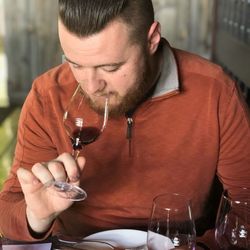







Jonathan Fuss
Picked up from ambassador after telling them I liked Akashi. Tastes similar. — 4 years ago